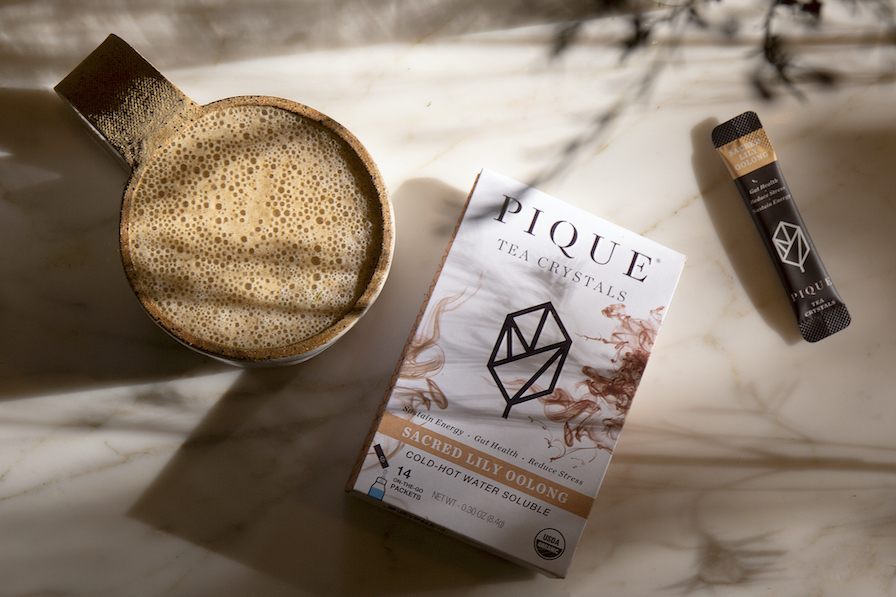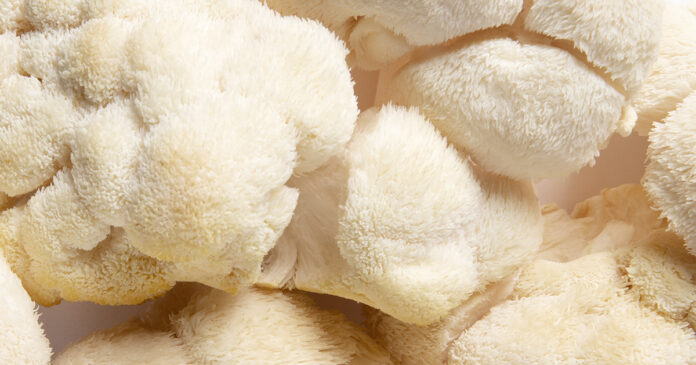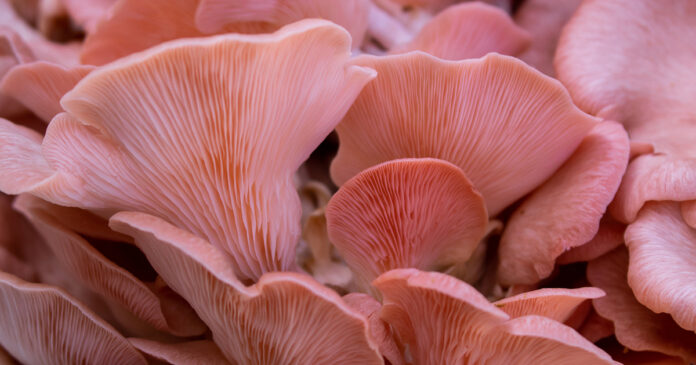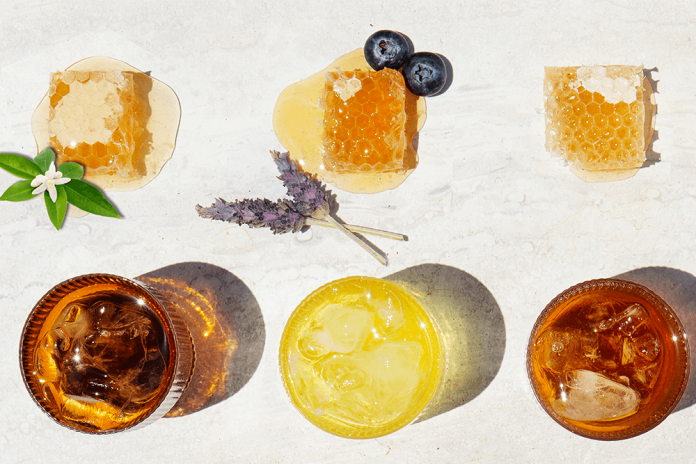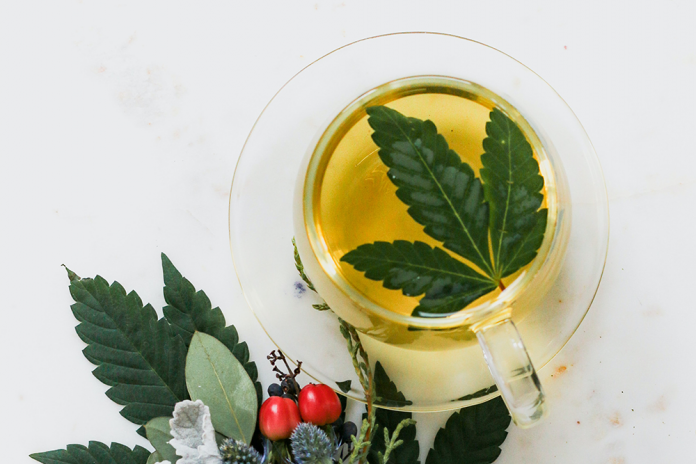What exactly is oolong tea?
Well, for starters… if you have trouble deciding between black tea or green tea, this traditional Chinese tea is the perfect blend between the two.
Thanks to its unique flavors and unique combination of polyphenols, oolong is the one tea we would take along to a desert island – if we could only choose one type!
That’s why we’re sharing everything we love about oolong in this guide. You’ll learn how oolong tea earned its name, potential health benefits, and what makes it different from other tea types.
Who knows, it just might be your yet-undiscovered favorite!
What is Oolong Tea?
The rich history of oolong tea, sometimes pronounced Wu-long, dates back to the Fujian Province of China.
While the most popular varieties of oolong tea still come from the Wuyi Mountains in China, you can find oolong tea from Taiwan, Thailand, India, Japan, and New Zealand too.
The different climates, geography, and processing methods of these regions each produce unique flavor profiles, similar to how wines vary in taste depending on where they’re grown and harvested.
All oolong tea leaves come from the same Camellia Sinensis plant that black tea and green tea come from. But oolong is a totally different category of tea due to its processing.
How Is Oolong Tea Grown and Produced?
Oolong tea leaves are picked several times per year, with optimal harvesting seasons in the spring and fall. After harvesting, tea makers let the oolong tea leaves wither and dry under the sun.
Removing moisture makes the tea leaves flexible and less likely to break during the rolling process. Tea artisans roll and curl the tea leaves to break down their plant walls and release their enzymes.
The fun part? These curled loose tea leaves resemble tiny dragons as they darken during roasting and drying. That’s why the Chinese translation for “oolong” is roughly “black dragon.”
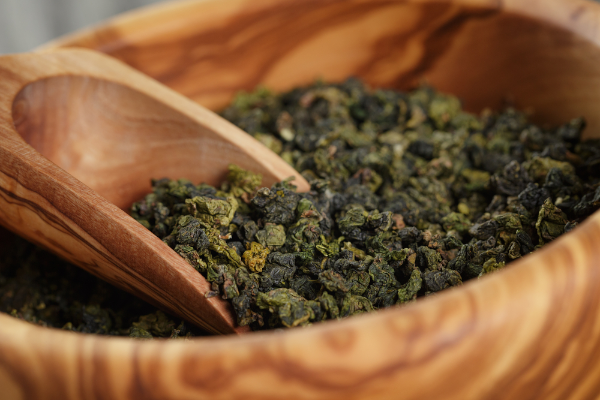
Rolling gives oolong tea leaves their distinct shape, aroma, and color. It also aids in the oxidation process. Oxidation occurs when tea leaves are exposed to oxygen.
Partial oxidation is another reason oolong is different from black and green tea.
How Does Oolong Tea Compare to Black or Green Tea?
Despite coming from the same Camellia Sinensis plant, black teas, green teas, and oolong teas vary widely in taste and color. You can thank the different growing, harvesting, and processing methods for this nice variety.
See, black teas are fully oxidized teas, which gives them a darker color and bolder, stronger flavor. Matcha and green tea, on the other hand, are not oxidized. These tea leaves produce a lighter cup with a brighter, vibrant flavor.
Oolong tea sits right in the middle since it’s only semi-oxidized. The tea leaves oxidize anywhere from eight to 60 hours, so whole leaf oolong and your final brew will be darker than green tea, but lighter than black.
This partial oxidation process gives oolong tea the rich, robust flavor of a black tea with the herbal, fruity notes of green tea.
Taiwanese oolong, for instance, generally goes through less oxidation than Chinese oolong, resulting in a lighter, greener cup of tea.
How much Caffeine is in Oolong Tea?
Darker oolong teas may have as much caffeine as black tea, whereas lighter oolong teas may have a similar caffeine content to green tea.
Because each tea artisan produces their oolong differently, you’ll need to check the caffeine content of oolong tea bags or loose-leaf individually.
The Top 4 Possible Health Benefits of Oolong Tea
The latest research on the health benefits of oolong tea show it:
1. May Boost Your Antioxidant Intake
Tea leaves contain beneficial antioxidants that support your body in the fight against free radicals and help keep your body in tip-top shape.
You probably already know that green tea is famous for its catechins, while black tea is uniquely loaded with theaflavins.
Enter oolong tea… because of its semi-oxidation, it actually contains both catechins and theaflavins, so it’s like having the best of both worlds!
One study showed oolong tea contains double the polyphenols of green tea (1). Polyphenols are a prebiotic-type substance that may help feed your healthy gut bacteria and thus help to support good gut health, which is the foundation of essentially all health!
2. May Support Healthy Weight Management
Scientists studying oolong tea say drinking it may be able to help you:
Burn more calories at rest. Healthy Japanese women drinking oolong tea in one study burned 10% more calories at rest than when they drank green tea (1). These results lasted over one hour and 90 minutes, “significantly higher” than when the women only drank water or green tea.
Results from another study showed oolong tea consumption in healthy males resulted in an additional 281 to 331 calories burned per day, or the equivalent of one workout (2). The men consuming the oolong tea also boosted fat-burning by 12%.
Promote healthy body fat levels. Over 70% of participants in one study lost an average of 2.2 pounds, and 22% lost 6.6 pounds, after adding oolong tea to their diets for six weeks (3).
Researchers discovered that 12% of subjects also decreased their subcutaneous fat or the fat that appears dimply just below your skin’s surface.
The participants in these studies were able to support healthy weight management through no other dietary or lifestyle changes other than sipping oolong tea consistently.
3. May Support Heart Health
Oolong tea has long been studied for its effect on heart health (5). Participants in the study mentioned above reduced their body fat and also supported healthy triglyceride and cholesterol levels by drinking oolong (3).
4. May Support Healthy Blood Sugar Levels
Researchers reviewing over 37,000 with over 500,000 participants found a correlation between drinking two cups of tea per day and supported blood sugar regulation (7).
In one small study, participants consumed only oolong tea or water for 30 days each. Scientists learned oolong tea supported regulation of blood sugar levels, yet drinking water did not change them (8).
What are the Potential Side Effects of Oolong Tea?
Even though there’s less caffeine per cup in oolong tea than coffee, pregnant and breastfeeding tea drinkers may want to limit their daily cups of oolong tea, or stick with caffeine-free herbal teas instead.
Try a Nice Cup of Oolong Tea Today
Despite coming from the same tea plant as green, black and white teas, oolong is a totally different option to add to your collection. It’s easy to see why oolong earns our top choice if we could only choose one type of tea.
Since it’s the perfect blend between black tea and green tea, you won’t have to decide between your favorites. And the potential health benefits of oolong are nothing to slouch at either!
You can buy oolong tea as loose leaf tea, in tea bags, or in tea crystal form. Check out our spotlight on the five best oolong teas here.
Enjoy by steeping a teapot of oolong for your friends and family, or brew a refreshing cup of iced tea just for yourself.
See why this may become your new favorite tea today!
